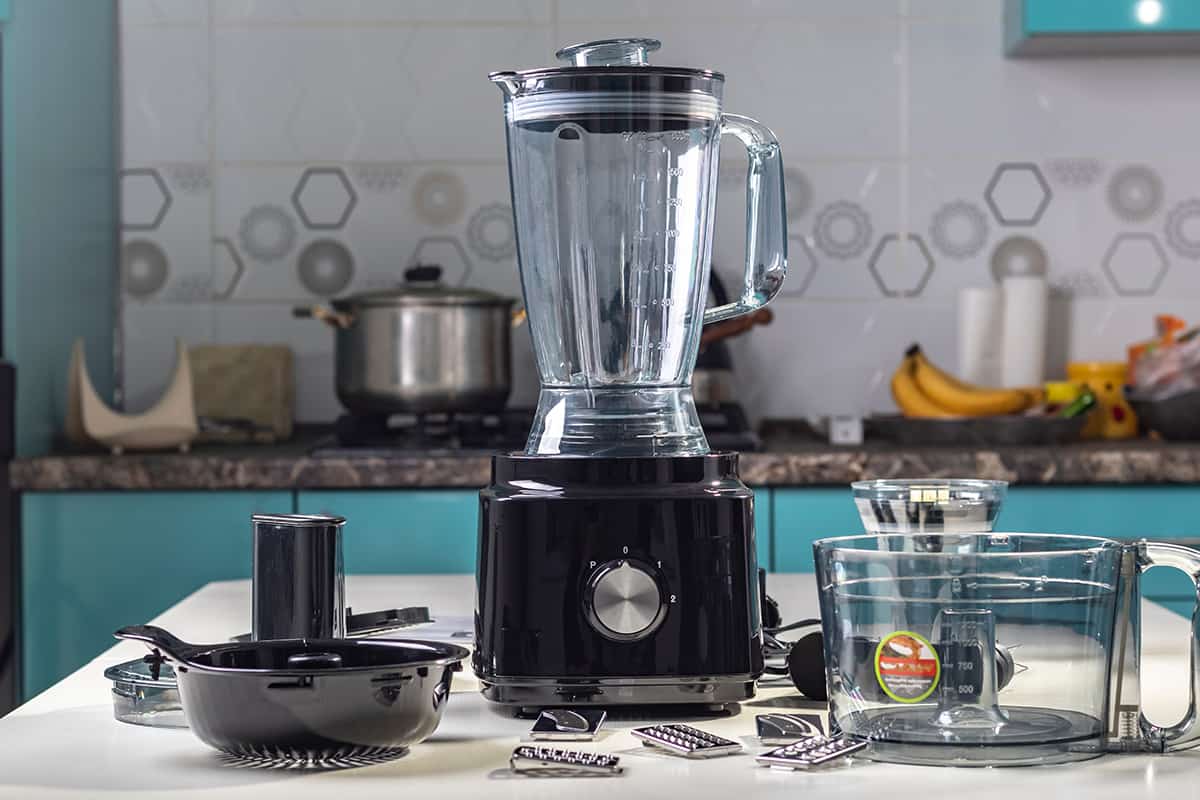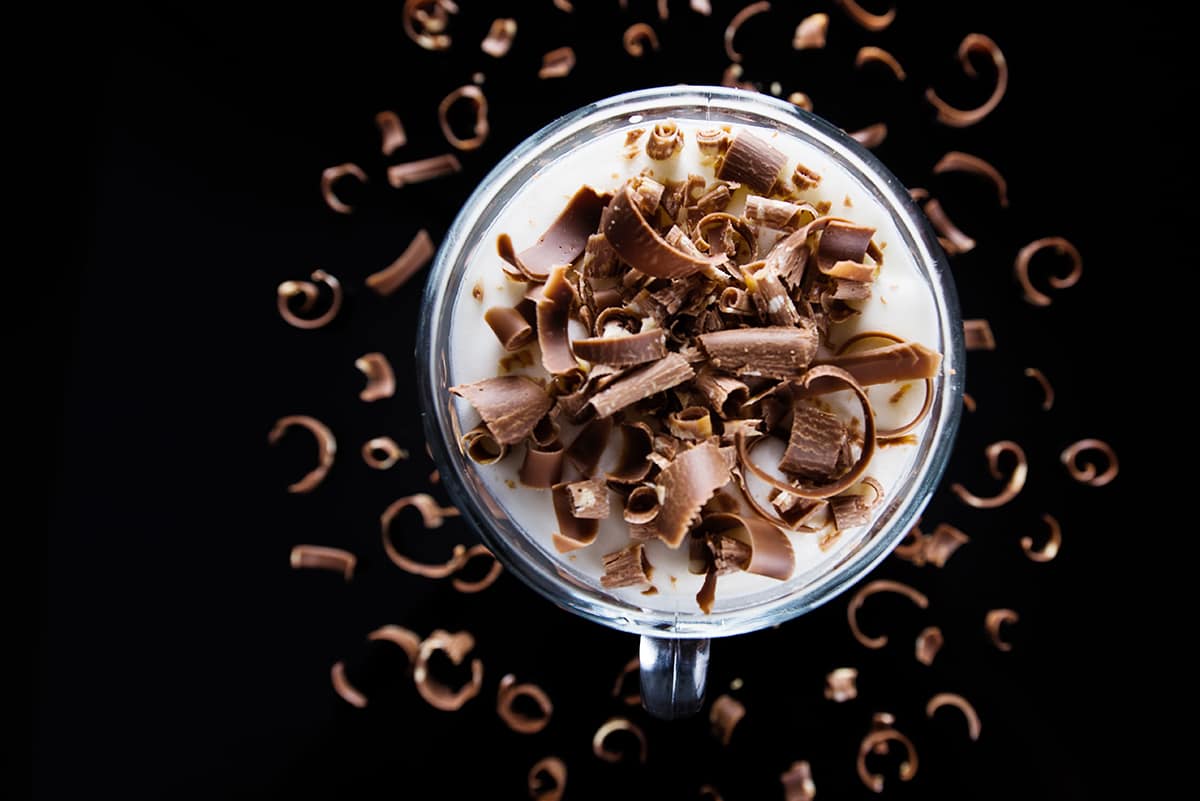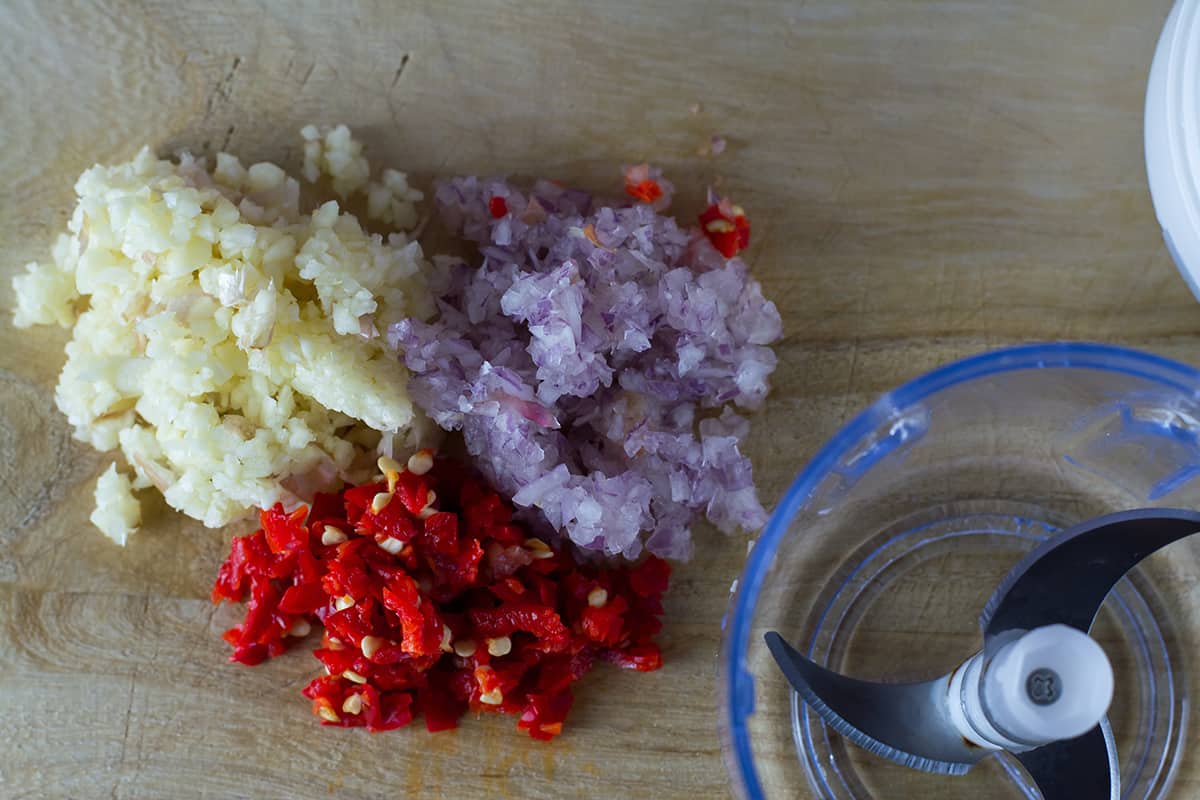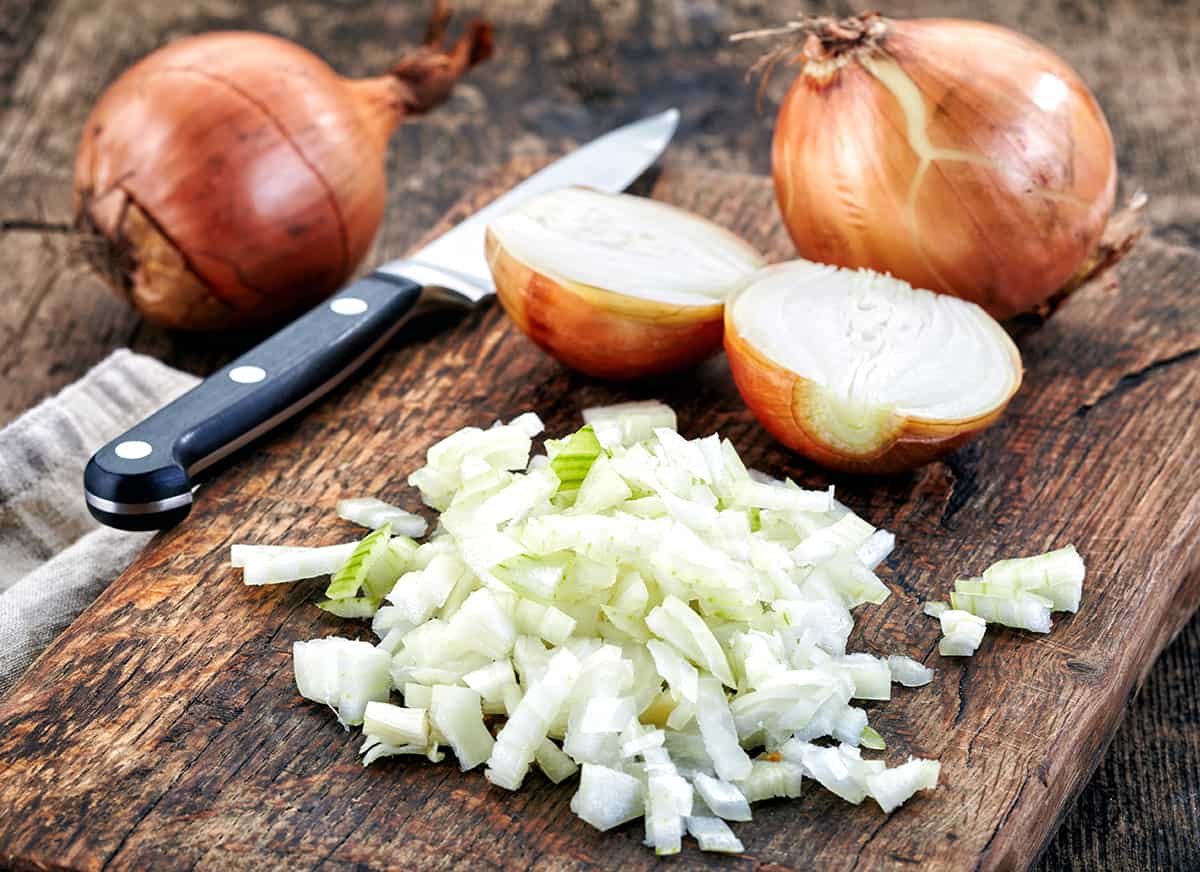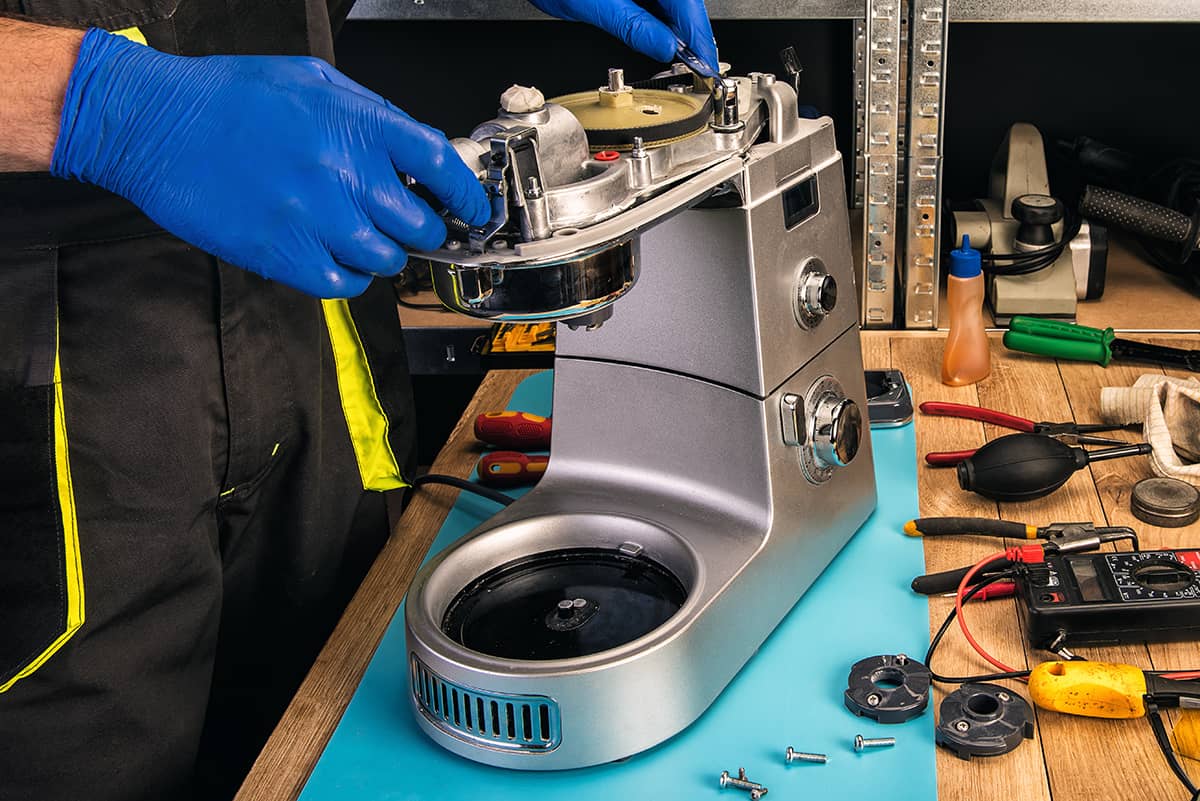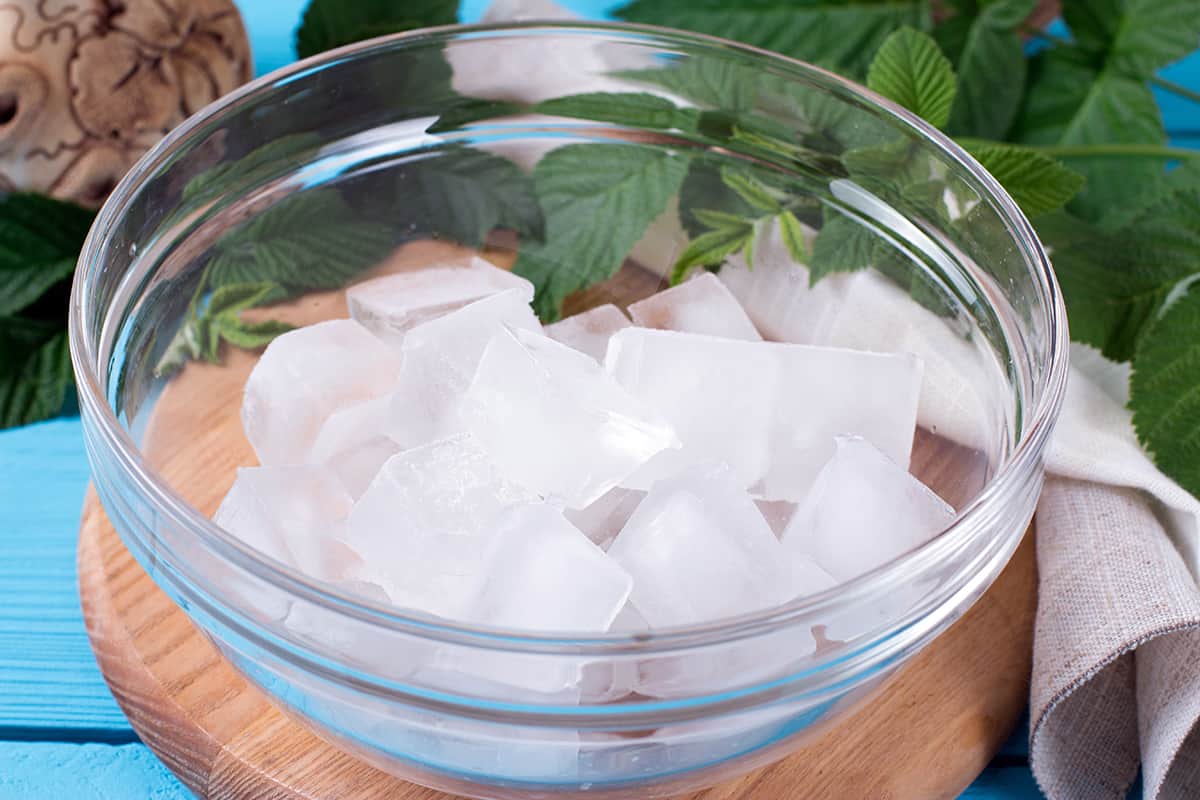Food processors do easy work out of chopping and slicing vegetables. They can also be used for a wide assortment of other applications, making them one of the most versatile tools you could own in the kitchen.
In this guide, I’m going to spout random facts and stats about this must-have appliance. So, if you’d like to learn about the history of the food processor, what it does, and how it differs from blenders, I invite you to scroll down and continue reading!
History of the Food Processor
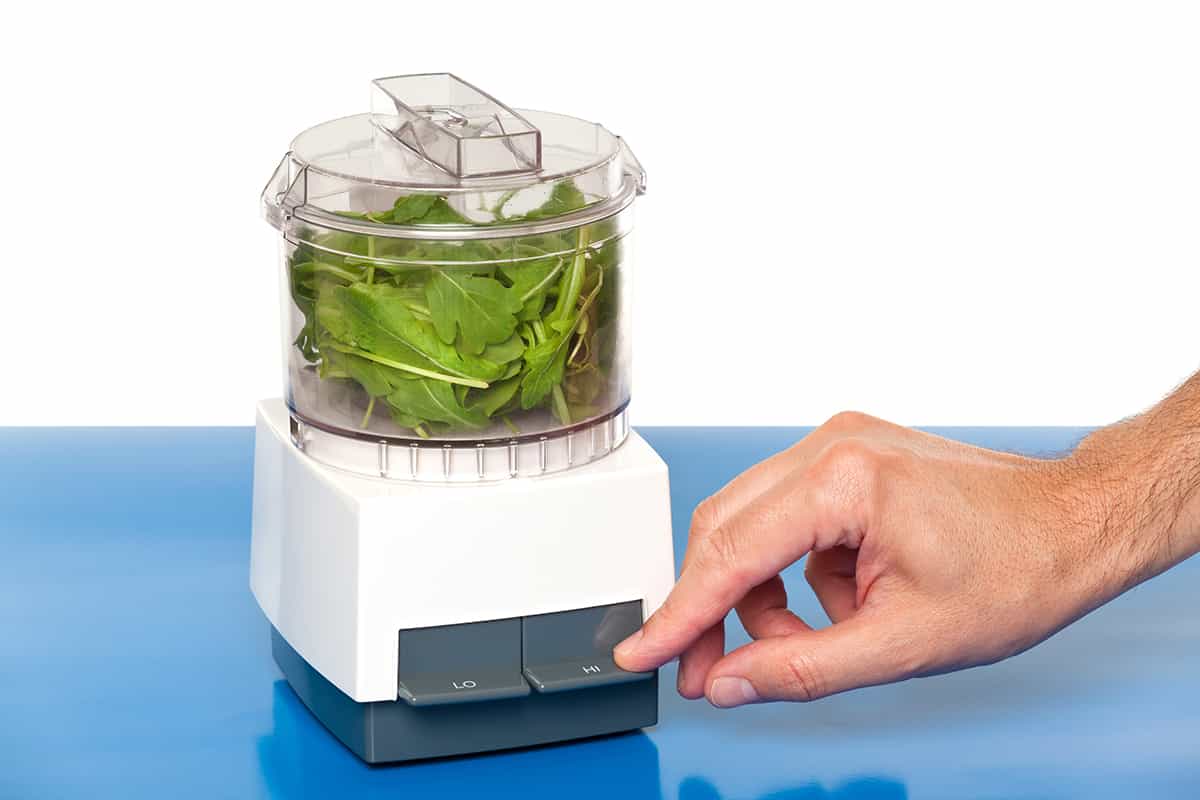
The food processor became an icon of household progress. The widespread adoption of food processors can be traced back to the decades between the 1970s and the 1980s. Together with the microwave, these appliances heralded a brand-new era in the comfort and convenience of home life.
Early Iteration
In the 1940s, the first food processors appeared on the market. After WWII ended in 1945, a German engineering firm called Electrostar began experimenting with new home electronics. Electrostar had begun assembling new items such as the Starmix. It wasn’t much more than a standard blender, but it did have some cool, unique accessories. 20 years later, the food processor would grow in popularity, but by then, Electrostar would transition to vacuum cleaners and dryers.
Rapid Development
The first modern food processor was developed by Pierre Verdun in 1960. Verdun found that the time spent on food preparation in commercial kitchens, by chefs in restaurants, and by caterers, was excessive. Numerous kitchens were unable to increase their output because chopping, slicing, shredding, and mashing took up so much time.
Verdun devised the Robot-Coupe, a massive processor with a powerful electric motor and a flat blade for chopping and slicing, to deal with this issue. He came up with the term “food processor” to market the Robot-Coupe to restaurants and catering companies. With the right equipment, food processing could be as streamlined as any other industrial operation.
A decade would pass before the food processor was adapted for use in ordinary homes. When Verdun saw how well the Robot-Coupe was selling, he knew he could make it even more portable. The new model he created was named Le Magi-Mix or Magimix and was aimed at home cooks and families. When the Magimix first hit store shelves in the late 1960s, it sparked the interest of innovators and entrepreneurs all over the globe.
Food Processor Revolution
In the 1970s, food processors went from being a niche, nice-to-have product to a common kitchen appliance. New food processors were plentiful by 1970 with the advent of new Starmix mixers. The newest version of the mini-Magimix would be introduced at a trade show in Paris in 1971 and would quickly gain popularity across the continent.
In 1973. In Chicago, Carl Sontheimer unveiled the revamped Magimix 1800. It didn’t take long for the new food processor to become a runaway success after it was introduced and marketed under the Cuisinart name.
Sales of food processors reached the hundreds of thousands in just 10 years. By 1980, food processors were commonplace in many homes, and their widespread popularity prompted millions to consider adding one to their own kitchens.
Modern Food Processors
We can still find food processors on the market, but their prevalence is much lower than it was in the past. Instead of using a food processor, many modern home cooks opt for high-tech blenders and stand mixers.
Nonetheless, we can still find food processors on the market, and these appliances have improved in durability, functionality, and adaptability over the years. Many well-known brands remain at the forefront of today’s food processors, including Cuisinart, Magimix, and KitchenAid.
Food Processor Facts and Statistics
- Food processors usually contain bowls between 9 and 13 cups in size.
- Compact food processors can hold as little as 5 cups of ingredients.
- The smallest food processor size, the mini-size, is limited to just 2 to 5 cups.
- Food processors replace knives in the kitchen. They can be used for numerous slicing and chopping applications.
- Food processors can come with a wide range of accessories used for cutting, slicing, julienning, and crushing ingredients.
- Some of the fanciest attachments include a dough blade for kneading dough, an egg whip paddle for beating eggs to stiff peaks, a French fry disc for making evenly sized French fries, a citrus juicer for extracting juices from citrus fruits, and a non-citrus juicer that extracts juices and discards the pulp of non-citrus fruits.
- On average, a food processor will come with 6 different accessories. Generally, the more you spend on the unit, the more accessories you’ll receive.
- Food processors can be used to make almost anything from salsas and smoothies.
- Food processors are mainly used to chop, slice, and shred vegetables—they’re not ideal for blending ingredients into a liquid base.
- Food processors typically range from $40 to $500, but a high-end unit can cost more than $1,000.
- The average food processor will last for a decade with frequent use and maintenance.
- A food chopper is a primitive type of food processor. It can only chop food into rough, semi-even pieces.
- Food processors usually weigh more than 20 pounds, depending on the size of the bowl. Heavier food processors come with a sturdier base, which prevents them from rocking around when processing large amounts of solid ingredients.
- When using the pulse function on a food processor, you should pulse for only 5 to 10 seconds at a time while giving it 2 to 3 seconds of rest breaks in between.
- The number of UK homes with food processors has steadily declined from 2005 to 2017.
- The number of US households that purchased food processors between 2010 and 2017 has steadily declined.
- The phrase “food processor” can also refer to a kitchen occupation where a food processor prepares large quantities of ingredients prior to service.
- On average, a food processor employee in the US can make slightly less than $30,000 annually.
- The food processor and blender industry has an estimated value of $3,475.21 million and will grow to about $5,553.2 million in 2028.
- The wattage rating of a food processor will tell you how powerful it is. Small food processors are usually rated around 250W, whereas beefier units are rated at 600W and above. The higher the wattage, the easier it is for the food processor to break down raw ingredients.
- The blade of a food processor can reach speeds of 1,700 RPM and beyond. Blenders, on the other hand, can go as high as 30,000 RPM.
- The actual speed of the blade varies from model to model. You should also take the motor size and speed options into account since they can affect how fast or slow the blade revolves.
What’s the Difference Between a Food Processor and A Blender?

A food processor is mainly used for chopping, slicing, and shredding ingredients prior to further processing. It does a quick job of preparing your ingredients so that you can focus more on cooking them.
Blenders, on the other hand, are mainly used for turning ingredients into a liquid by pulverizing and incorporating them into a liquid base. This is why blenders are used to make soups and smoothies more often than food processors.
Can You Crush the Ice with A Food Processor?
Yes, you can. However, this only works in food processors that are designed to crush or grind ice. If your food processor doesn’t have the necessary attachment, or if its blades are rated to crush ice, then you should keep ice cubes as far away from the tool as possible.
The blades of a food processor can quickly turn whole ice cubes into a nice slush. However, if you depress the pulse button for too long, the heat from the motor may cause the ice to melt, leaving you with a puddle of water.
How Long Does a Food Processor Last?

On average, you can expect to get 10 good years out of a single food processor unit. However, more high-quality products made by brands like Magimix and Cuisinart can last for upward of 25 years with careful use and frequent maintenance.
You can usually tell when the food processor is nearing the end of its life when it doesn’t cut vegetables as efficiently as it used to. Also, rapid overheating is a sign that you’re not using your food processor carefully and that it needs to be replaced pretty soon.
How Much Should You Spend on A Food Processor?
Food processors typically range from $40 to $500. You can even find high-end models with a $1,000-plus price tag. As you can see, the price of a food processor is all over the place.
How much you spend on a food processor mainly depends on 2 variables—how big it is and how many accessories it comes with. The larger the bowl and the more cutting blades there are, the more versatile and costlier it is.
If you want a food processor that lasts for at least a decade with proper maintenance, you should expect to spend anywhere from $100 to $250 on a unit.
FAQs
1. Can you process hot ingredients?
No, you can’t. Food processors are not designed to deal with hot ingredients since their plastic bowls usually can’t withstand extremely hot temperatures. In addition, the heat of your ingredients can also accelerate the wear and tear of the unit’s blades. You should allow the ingredients to come down to room temp before blitzing them in a food processor.
2. Can you put raw ingredients in a food processor?
Yes, you can. Food processors are usually powerful enough to pulverize raw vegetables, including carrots and potatoes, in a jiffy. That said, if you don’t want to wear out the motor too quickly, you should only put softened ingredients inside the bowl prior to pulsing.
3. How to clean a food processor?
You need to clean the cutting attachment and bowl thoroughly after using your food processor. Disassemble these parts and place them in a basin of soapy water. Scrub these components with the soft side of a sponge, making sure to get all of the nooks and crannies. Rinse the blade and bowl, and place them on a dish rack to air-dry.
Alternatively, you can stick the bowl on the bottom dish rack in your dishwasher. However, the metal cutting attachment should be washed by hand.
4. Do you need a food processor if you have a blender?
Remember: blenders and food processors are not the same. While they operate almost identically (an electric motor turns a sharp blade to cut ingredients inside a bowl or pitcher), they are used for completely different things.
A blender is mainly used to incorporate ingredients into a liquid base—i.e., make smoothies, soup, etc. Food processors are mainly used for breaking ingredients down for further processing. A blender will not do everything a food processor can do and vice versa.
However, if you had to choose between the 2, I would recommend getting a food processor since it can sort of do what a blender does, whereas a blender cannot chop vegetables to even sizes.
5. How fast is a food processor?
The typical food processor can reach a maximum speed of 1,700 RPM. This is considerably lower than a blender’s speed (between 17,000 and 30,000 RPM) since food processors are mainly used for processing solid ingredients. Also, the width of the blade, which is usually wider than that of a blender, affects the overall speed by a lot.
6. When is the best time to buy a food processor?
There are usually 2 times when food processors go on sale: during Black Friday and in January.
In general, these are the best times to purchase small home appliances because manufacturers are planning newer releases in the upcoming months. Retailers want to get rid of as much old inventory as possible to make room for the newer stuff, so older models will go on sale and cost considerably less than they did during the previous spring and summer seasons.
